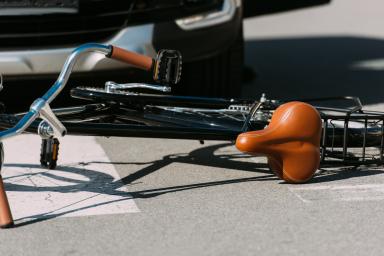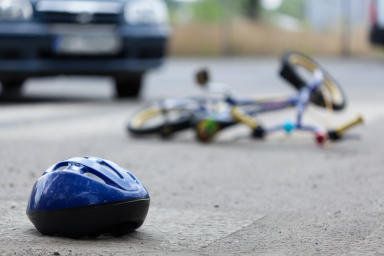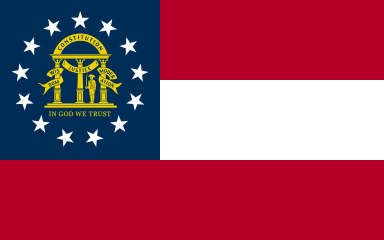Maryland Bicycle Laws

Maryland has more than 3,100 miles of shoreline and countless historical and cultural destinations. It is also home to some of the country’s best bike tours. The Office of Tourism has listed some of the state’s remarkable biking trails and historic places that residents and tourists can explore.
While cycling around the Old Line State can be enjoyable, it definitely comes with risks. Bicycles lack a protective barrier, are less noticeable, and are quieter than other vehicles. Even the smallest mistake can result in serious injuries or even death. According to the MDOT Motor Vehicle Administration’s Highway Safety Office, an average of 782 crashes involving bicycles or pedal cycles occurred from 2017 to 2021, with 10 deaths, 634 people injured, and 138 incidents of property damage on average.
In an effort to reduce fatalities and serious injuries on the road, Maryland has been implementing various initiatives. These include Be the Driver, a campaign launched by the MHSO that aims to keep roadways safe by addressing unsafe driving behaviors. It utilizes digital channels, such as music streaming apps and social media platforms, as well as local television, to demonstrate typical situations that road users face and illustrate their responsibilities. The campaign emphasizes aggressive, speedy, distracted, and impaired driving. It also focuses on the safety of younger and older drivers, motorcyclists, bicyclists, and pedestrians.
Like cars and trucks, bicycles are considered vehicles on Maryland’s roadways. Therefore, cyclists and drivers must learn to share the road and take all the necessary precautions to ensure each other's safety.
Although certain laws and initiatives are in place, accidents can still happen. This article will discuss legislation, rules and regulations, and legal resources that can help Marylanders who sustain injuries in a bicycle crash.
Maryland Bicycle Helmet and Equipment Law
Safety helmets are required for everyone under the age of 16 who rides a bicycle on roadways, bike paths, or public properties. Every helmet should meet the standards of the American National Standards Institute, the Snell Memorial Foundation, or the American Society for Testing and Materials.
There are also various pieces of equipment required when operating a bicycle. If the bike is used on a highway where people and vehicles are not clearly visible at 1,000 feet, it should have a lamp on the front and a red reflector on the rear. During the night, bicycles should be equipped with a rear red reflector and a front white light visible from 600 feet away. A bike may also be furnished with a bell or horn, but not a siren or whistle. Furthermore, a bicycle or motor scooter must have a brake that will allow the cyclist to stop at a speed of 10 mph within 15 feet on dry, level, and clean pavement.
Maryland Traffic Laws for Bicycles
Maryland’s traffic laws apply not only to cars, trucks, and similar motor vehicles but also to bicycles. Therefore, cyclists should be familiar with traffic laws and restrictions to prevent serious injuries or fatalities.
Prohibited Roadways and Bridges
The MDOT State Highway Administration has listed some of the roadways and bridges that are unsuitable for bicycles. These are mostly highways and roads where the speed limit is 50 mph or higher. If a person is cycling on a shoulder adjacent to a roadway with a speed limit of over 50 mph, they may enter the roadway under these conditions:
if they are making a left turn or crossing through an intersection
if the shoulder is overlaid with a right turn, bypass, or merge lane
Speed Limits
The speed limit for operating a motor scooter is 30 mph, while the limit for riding an electric personal assistive mobility device is 15 mph.
Bike Lanes
When a bike lane is paved with a smooth surface, cyclists should stay on it unless avoiding hazards, turning left, or safely passing or overtaking another bicycle or pedestrian is impossible.
Other Rules and Restrictions
Anyone riding a bicycle should stay as close to the right side of the road as is practicable and safe. They may otherwise go to the other side when making a left turn, riding on a one-way street, passing a slow-moving or stopped vehicle, avoiding road hazards or pedestrians, passing a right-turn-only lane, or operating in a narrow lane.
Cyclists, just like motorists, cannot ride against the traffic and should obey traffic signals. They may ride side-by-side as long as they are not delaying or obstructing motor vehicle traffic. On the other hand, cars making turns must always yield to cyclists as they have the right-of-way. Violating this rule may result in a $1,000 fine and three demerit points on the driving record. Drivers are also required to maintain a safe distance—minimum of three feet—when passing bicycles.
Bicycles are prohibited from carrying passengers unless designed to do so and equipped with a securely attached seat for each passenger. Cyclists are also not allowed to hold anything that can prevent them from keeping both hands on the handlebars, interfere with their view, or make them lose balance on their bicycle. Additionally, they cannot wear earplugs or headsets on both ears while riding.
Maryland Electric Bike Laws
In Maryland, an electric bike, or e-bike, is defined as a bicycle with an electric motor of not more than 750 watts and fully operational pedals. It can also run at a maximum speed of 28 mph on flat surfaces. E-bikes are grouped into three categories:
Class 1 - equipped with a pedal-assist only and stops when it reaches 20 mph
Class 2 - equipped with a motor exclusively used to propel the e-bike and stops when it reaches 20 mph
Class 3 - equipped with a motor that assists only while the rider is pedaling and stops when it reaches 28 mph
Every bike should have a standardized label permanently affixed to it. This label consists of information about the e-bike’s classification, top assisted speed, and motor wattage.
Additionally, e-bikes are regulated in the same way as human-powered bicycles, with a few differences related to road rules. Just like bicycles, operating e-bikes does not have registration or licensing requirements. Class 3 e-bikes, however, are not allowed on bicycle paths unless authorized by the local government or the path is adjacent to or within a highway’s right-of-way. People under 16 may ride a Class 3 electric bike as a passenger but not as an operator. Furthermore, the state law stipulates that riders, regardless of age, must wear a helmet while riding their electric bikes.
Is Maryland a No-Fault State for Bike Accidents?
No, Maryland is an at-fault or tort state. This means the at-fault driver or their insurance company is financially responsible for the damages resulting from a bicycle accident. If you are hit by a car and the driver has no insurance or insufficient coverage, you can use your uninsured or underinsured motorist insurance policy. If you do not own a car but ride your bicycle regularly, you may also opt to purchase UM or UIM coverage.
Maryland is also one of the few states that follows a pure contributory negligence system. If you are partially at fault for your injuries, even if the other driver mostly caused the crash, you are barred from recovering any damages.
As such, it is crucial to determine who is responsible for an accident by looking at the factors that played a major role in causing the injuries. It is also possible to have several individuals or parties liable for the accident. These include the negligent driver; the bike manufacturer or retailer that produced or sold defective parts; a government entity for crashes caused by unserviced or unsafe roads; the repair shop or mechanic if the recently repaired bicycle turns out to be faulty; and the public or private property owner if the accident was caused by dangerous conditions within their property.
Bicycle accident lawyers can help protect your rights by determining and proving fault for your injuries.
How Much Can Someone Sue for a Bicycle Accident in Maryland?
The amount of the settlement may vary depending on the economic and non-economic losses suffered by the plaintiff. In some cases, punitive damages may also be awarded.
Economic Damages
Economic damages cover financial losses suffered by the plaintiff. These include medical treatment like diagnostic tests, surgeries, prescription medications, and doctor visits; ongoing rehabilitation or therapy; household assistance costs; funeral or burial expenses; and damages to property. Maryland does not impose caps on economic damages for bicycle accident cases.
Non-Economic Damages
The victim of a bicycle accident suffers non-economic damages, which are intangible losses. These include pain and suffering, loss of consortium and companionship, disfigurement, and permanent disability.
The state began imposing a $500,000 limitation on non-economic damages for personal injury cases on or after October 1, 1994. This limit has increased by $15,000 yearly since 1995. For wrongful death claims with two or more beneficiaries, the limit is capped at 150% of the maximum amount for injury claims. As of October 1, 2022, the damage caps are $920,000 for personal injury cases and $1.38 million for multiple wrongful death claims.
Punitive Damages
Punitive damages may be available in some personal injury or wrongful death claims involving bicycles. It can be awarded by the court if they determine that the defendant acted with the intent to hurt someone.
What Is Maryland’s Statute of Limitations for Bicycle Accidents?
The statute of limitations in Maryland is generally three years for bicycle crashes. This means if you are injured in a bike accident due to someone else’s negligence, you should file a lawsuit within three years of the collision date. Three years may seem like a long time, but it is important not to delay filing the initial documentation with the court; otherwise, you will lose your right to seek compensation from the liable party or their insurance company.
However, there are several factors that may affect the statute of limitations. If the victim is a minor or is mentally incapacitated, the clock starts when the minor turns 18 or when the disability is remedied. The statute may also be delayed if the defendant fraudulently concealed their liability from the injured victim. Additionally, if the defendant committed assault, the statute of limitations is shortened to one year.
Legal Resources for Maryland Bicycle Accident Victims
Maryland Highway Safety Office
The MHSO is responsible for creating a comprehensive network of traffic safety programs that will reduce motor vehicle accidents. It also prepares the state’s Annual and Strategic Highway Safety Plans. Its website, Zero Deaths Maryland, contains digital resources, including social media content, to raise awareness about key road safety issues. It also guides motorists and riders on what to do during a roadside emergency.
Maryland State Police
The Maryland State Police coordinates efforts between federal and local law enforcement agencies. Some of its initiatives include reducing drunk and aggressive driving, minimizing traffic crashes, and dealing with unsafe vehicles. Citizens may obtain police reports, submit and track complaints, and give compliments to MDSP and its personnel. MDSP is located at 1201 Reisterstown Road, Pikesville, MD 21208, and its contact numbers are 410-653-4200, 800-525-5555, and 410-486-0677 (TDD).
Bike Maryland
Bike Maryland has been the voice of safe cycling for riders throughout the state for more than 23 years. It encourages executive agencies and legislators to pass laws that can make cycling safer and represents local bike advocacy groups at the state level. The organization also helped get some bills adopted as state laws by drafting the bills, monitoring their progress, and having its members testify at committee hearings. These laws include the Vision Zero Act of 2022, the Safe Walk to School Act, and the expansion of Employer-Provided Commuter Benefits. Bike Maryland also provides resources, including educational videos and guides, that you can find on its website.
Expertise.com StaffAuthor
Step into the world of Expertise.com, your go-to hub for credible insights. We don't take accuracy lightly around here. Our squad of expert reviewers, each a maestro in their field, has given the green light to every single article you'll find. From rigorous fact-checking to meticulous evaluations of service providers, we've got it all covered. So feel free to dive in and explore. The information you'll uncover has been stamped with the seal of approval by our top-notch experts.




